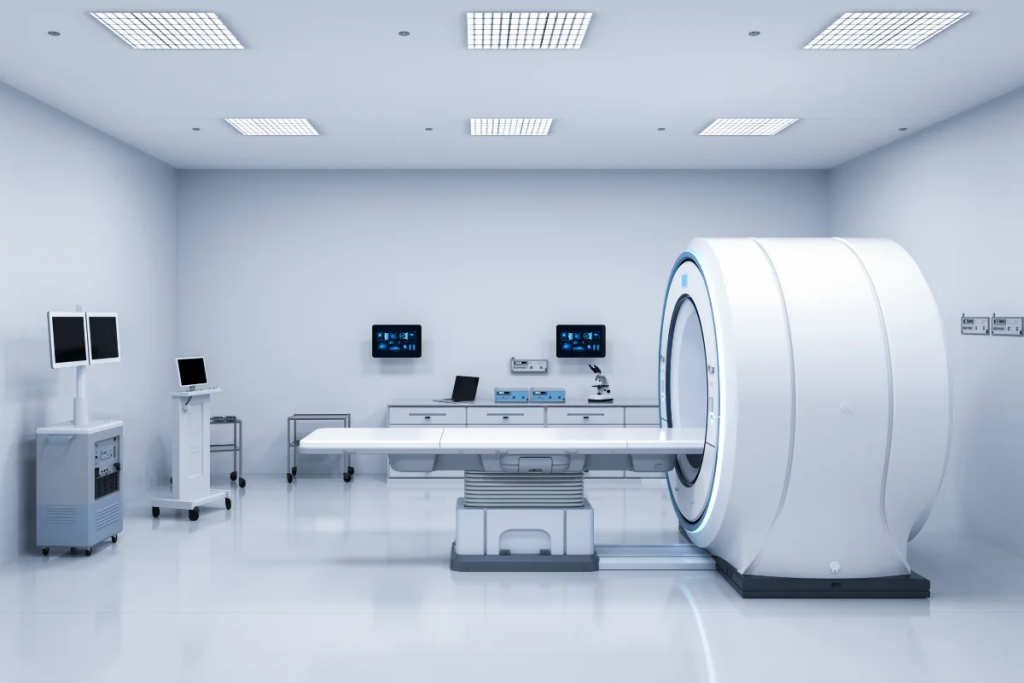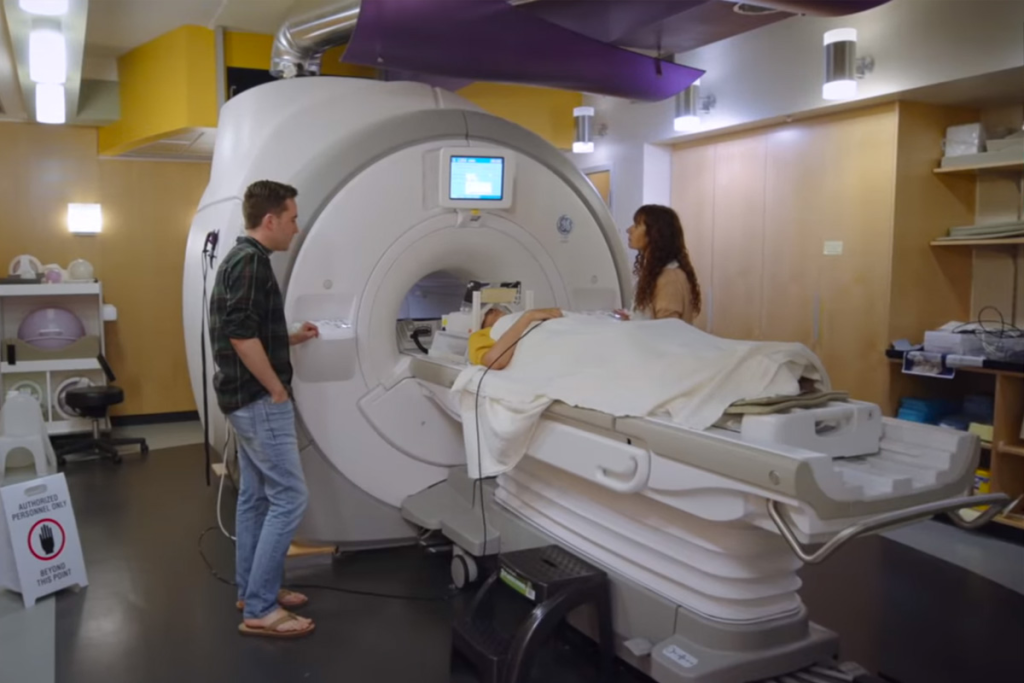Last Updated on October 31, 2025 by Bilal Hasdemir
Urologists use advanced imaging, such as MRI, to find and manage prostate cancer. The prostate MRI procedure provides clear pictures of soft tissues without using harmful radiation, aiding accurate diagnosis and treatment planning.
We use MRI to see how far prostate cancer has spread and to find other issues. This safe test helps doctors make accurate diagnoses and treatment plans.

By using MRI, doctors can find prostate cancer more easily and plan better treatments. This helps patients get better care and avoids the need for risky surgeries.
MRI is now a key tool in fighting prostate cancer. We use advanced MRI methods to spot cancer more accurately. This helps us make better treatment plans.
Multi-parametric MRI (mpMRI) is a detailed imaging method. It combines several MRI sequences to show the prostate gland fully. This helps us find cancer, see how aggressive it is, and if it has spread.
mpMRI uses T2-weighted, diffusion-weighted, and dynamic contrast-enhanced imaging. Each type gives us different info about the prostate. This helps us spot suspicious areas with great accuracy.

Using mpMRI for prostate cancer detection has big advantages. First, it’s very good at finding cancer that matters, cutting down on false negatives. This means patients get the right care quickly.
Second, mpMRI might mean fewer biopsies. It shows us who’s likely to have small or no cancer. This saves them from painful tests.
Key benefits of mpMRI include:
With mpMRI, we can give patients better care and outcomes. As we keep improving in prostate cancer diagnosis, MRI’s role will grow even bigger.
MRI technology has changed how we diagnose prostate cancer. It makes diagnosis more accurate and safer for patients. MRI has become a key part of diagnosing prostate cancer.
Using MRI to detect prostate cancer has a big advantage. Pre-biopsy multi-parametric MRI (mpMRI) has been shown to significantly reduce false negatives. This makes diagnosis safer and more efficient. MRI gives clear images of the prostate, helping find cancer and see how aggressive it is.
Using mpMRI before a biopsy helps spot suspicious areas. This lowers the chance of missing cancerous lesions. It also makes the diagnostic process smoother and improves patient care.
MRI offers enhanced visualization of suspicious areas within the prostate. This leads to more accurate diagnosis and staging of prostate cancer. The detailed images from MRI help doctors understand how far the cancer has spread and plan the best treatment.
MRI is now a vital tool in managing prostate cancer. It improves both diagnostic accuracy and patient safety. To get the best results, it’s important to follow specific guidelines for diet and medication before the MRI.

Using MRI helps avoid many unnecessary biopsies. This method lowers the risk of complications from invasive tests. It also makes patients less anxious and improves their quality of life.
A study found MRI-guided strategies have a 96% negative predictive value for significant prostate cancer. This means most men can skip biopsies. The study showed 41% of men avoided biopsies over three years, as reported in a 2023 publication.
The high negative predictive value of MRI is key in prostate cancer diagnosis. It lets doctors be sure that patients without cancer on MRI don’t need further tests.
Key benefits of MRI’s high negative predictive value include:
By spotting who’s unlikely to have serious prostate cancer, MRI cuts down on unnecessary tests. This benefits patients and saves money on healthcare costs.
In summary, MRI in prostate cancer diagnosis cuts down on biopsies and overtreatment. It uses its high negative predictive value to better care for patients. This approach also reduces risks from invasive tests.
Medical guidelines now include Prostate MRI as a key tool for checking prostate health. We’ll cover the main advice from top urology groups. We’ll also talk about when high PSA levels mean it’s time for an MRI.
The European Association of Urology has updated its rules. Now, they suggest MRI for men with PSA levels between 3“10 ng/mL and a normal digital rectal exam. This change shows how important MRI is for finding prostate cancer early.
Following this advice helps doctors sort patients by risk level. This makes the testing process better. MRI helps avoid too many biopsies and finds serious prostate cancer more easily.
High PSA levels might mean there’s a problem with the prostate, like cancer. An MRI can show if a biopsy is needed by giving clear pictures of the prostate. For men with PSA levels between 3“10 ng/mL, an MRI is very helpful.
Doctors decide on an MRI based on PSA levels, digital rectal exam results, and the patient’s history. MRI helps doctors decide if a biopsy is needed. This makes care plans more informed.
Key points to consider:
By sticking to these guidelines, doctors can give patients the best care. This care is based on the latest research and advice.
Learning about the prostate MRI procedure can make you feel less anxious. We’ll walk you through everything, from getting ready to getting your results.
To make your prostate MRI go smoothly, you need to prepare. Here are some steps:
Talking to your healthcare provider about any worries or questions is also key before the test.
The prostate MRI scan involves lying on a table that slides into the MRI machine. Here’s what happens during the test:
After your prostate MRI, you can usually go back to your normal activities right away. There are no special rules after the test.
Getting your results might take a few days to a week. This depends on how detailed the images are and how busy the radiology department is. Your doctor will explain the results to you, talking about what they mean for your health and any next steps.
Knowing how long a prostate MRI takes and what to expect can help ease your worries. It makes the whole experience more comfortable.
To make sure your prostate MRI goes smoothly, proper preparation is essential. We know getting ready for a test can seem tough. But with the right help, you’ll feel more ready and confident.
Before your prostate MRI, it’s important to stick to certain diet rules. Avoid caffeine and caffeinated drinks for at least 24 hours before. Caffeine can make muscles tense and might mess up the images.
Also, remember to:
Tell your doctor about all the medicines you’re taking. Some might need to be changed or stopped before the test. Make sure to talk about your medicines with your doctor to avoid any problems.
Some medicines to watch out for include:
During a prostate MRI, contrast dye might be used to make certain areas clearer. Whether or not to use contrast depends on what your doctor thinks you need.
MRI with contrast uses a dye called gadolinium that’s injected into your blood. It helps show up suspicious areas and gives more detailed pictures.
MRI without contrast uses the natural differences in tissues to create images. Your doctor will choose the best option for your needs.
By following these tips, you can help make your prostate MRI successful. This ensures your results are accurate. If you have any questions or worries, always ask your healthcare provider for help.
Getting your prostate MRI results can be a big moment. It gives you important information about your prostate health. We’re here to help you understand your results and what comes next.
The Prostate Imaging-Reporting and Data System (PI-RADS) helps doctors guess if you might have prostate cancer. It uses a score from 1 to 5. A score of 1 means no problems, and a score of 5 means cancer is likely.
Knowing your PI-RADS score is key. It tells us what to do next in your care. We’ll talk about what your score means to you.
Based on your PI-RADS score, we might suggest more tests. If your score is 3 or higher, a biopsy could be needed. But if your score is low, we might just watch your prostate with more MRIs.
We aim to give you the right care. This means not doing too much, but not missing important health issues either.
It usually takes a few days to a week to get your MRI results. When you do, we’ll talk about them with you. We’ll explain everything, tell you what to do next, and answer your questions.
We’re here to support you. We want to make sure you get the care you need for your prostate health.
MRI has become key in finding and treating prostate cancer. It gives clear images that help doctors make accurate diagnoses. This means fewer unnecessary biopsies for patients.
Using MRI helps doctors make better choices for their patients. This leads to better detection and treatment of prostate cancer. It improves patient outcomes and quality of life.
MRI offers many benefits in prostate cancer detection. It cuts down on false negatives and avoids invasive tests. Even though the cost of MRI is being looked at, its impact on healthcare is big. MRI is a vital part of modern urological care, helping to improve patient care and results.
A prostate MRI is a test that uses magnetic fields and radio waves to show detailed images of the prostate gland. It’s ordered to find prostate cancer, see how aggressive it is, and decide on treatment.
To get ready for a prostate MRI, you might need to avoid caffeine and tell us about your medications. You’ll also need to arrive early to fill out paperwork and get ready.
An MRI with contrast uses a special agent to make certain areas clearer. An MRI without contrast doesn’t use this agent. The choice depends on your condition and what we need to see.
A prostate MRI usually takes 30 to 60 minutes. This time can vary based on how complex your case is and what we need to check.
During the MRI, you’ll lie on a table that slides into a big magnet. We’ll guide you and keep an eye on you to make sure you’re comfortable and safe.
Your MRI results will be scored using the PI-RADS system. This system shows how likely prostate cancer is. We’ll talk to you about your results, explain what they mean, and suggest any next steps.
MRI makes it easier to find prostate cancer and avoid false negatives. It also shows us where to look closely. This helps us find cancer more accurately and avoid unnecessary tests and treatments.
MRI’s high accuracy means we can often rule out cancer without doing biopsies. This saves patients from invasive tests and improves their quality of life.
The European Association of Urology suggests using MRI for prostate cancer diagnosis and management. This is true when PSA levels suggest we need to investigate further.
The time it takes to get your MRI results depends on our workload and how complex your case is. We’ll let you know when to expect them and schedule a time to discuss them with you.
The cost of a prostate MRI varies based on location, facility, and insurance. We can give you more details about the costs for your specific test.
Subscribe to our e-newsletter to stay informed about the latest innovations in the world of health and exclusive offers!
WhatsApp us